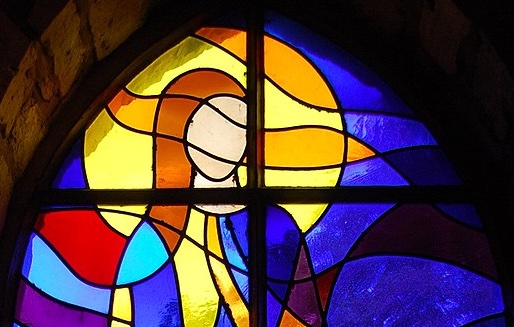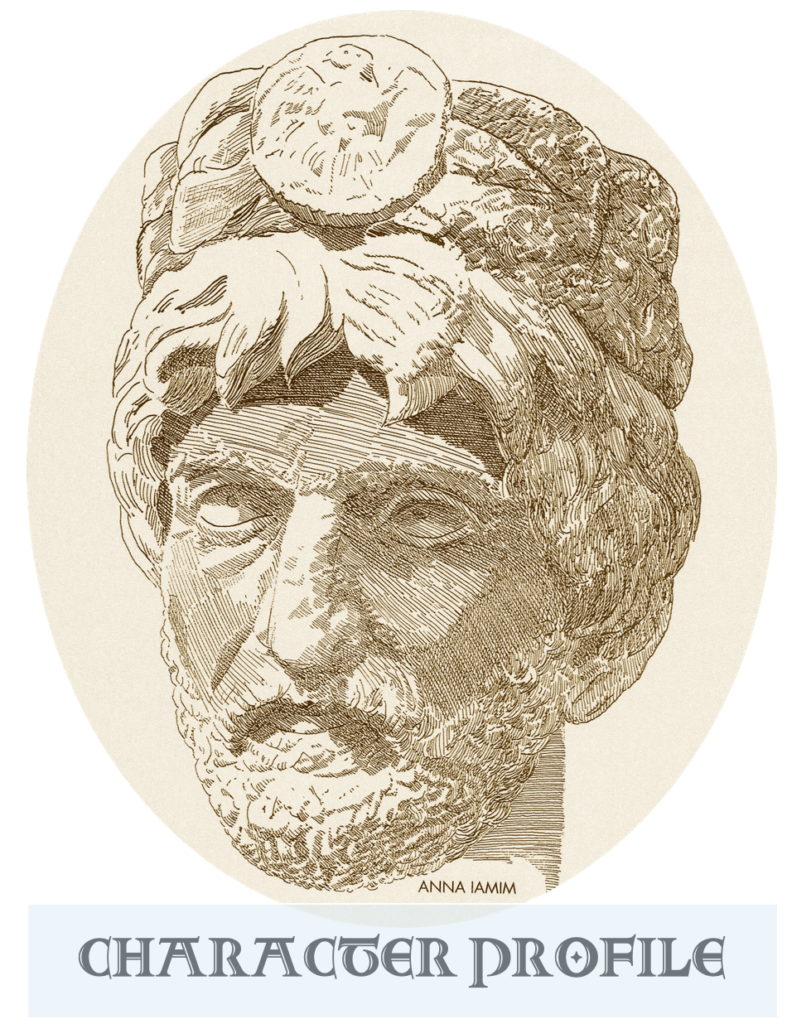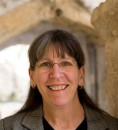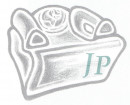How to cite this article: Miriam Feinberg Vamosh et al., “Character Profile: Mary Magdalene,” Jerusalem Perspective (2021) [https://www.jerusalemperspective.com/22360/].
“Mary!” Jesus called to her from outside the empty tomb (John 20:16). Upon recognizing Jesus, Mary Magdalene became one of the first witnesses to his resurrection and, as such, attained an important status within the early fellowship of believers.[42] Unfortunately, Mary Magdalene’s history is scarcely known, her identity has been obscured as she became confused with other Marys, and even the original form of her name has been largely forgotten. In place of accurate facts, strange ideas and fabulous speculations have arisen that have only further diminished the true image of Mary Magdalene. It is time to reacquaint ourselves with the lady from Magdala.
Premium Members and Friends of JP must be signed in to view this content.
If you are not a Premium Member or Friend, please consider registering. Prices start at $5/month if paid annually, with other options for monthly and quarterly and more: Sign Up For Premium

- [1] See Mark Abadi, “57% of Americans pronounce ‘merry,’ ‘marry,’ and ‘Mary’ the same, and it highlights a fascinating quirk of the English language,” Business Insider (Dec. 24, 2018), accessed May 17, 2021. ↩
- [2] The name מִרְיָם remained current to the end of the Second Temple period, being attested on ossuaries. See Levi Yizhaq Rahmani, A Catalogue of Jewish Ossuaries in the Collections of the State of Israel (Jerusalem: Israel Antiquities Authority, 1994), 83 (no. 31), 137 (no. 243), 158 (no. 351), 189 (no. 502), 197 (no. 559), 249 (no. 821). ↩
- [3] The form Μαριάμ is attested on Second Temple-period ossuaries. See Rahmani, A Catalogue of Jewish Ossuaries, 92 (no. 64). Given the transliteration of מרים as Μαριάμ, it is possible that in the Second Temple Period the name was vocalized differently than the Masoretic text (MT) indicates (viz. “Maryam” rather than “Miryam”). See Rahmani, A Catalogue of Jewish Ossuaries, 83. However, we notice the same phonetic shift regarding the toponym מִגְדֹּל (migdol, “Migdol”) in MT and Μάγδωλος (Magdōlos) in LXX (Exod. 14:2; Num. 33:7; Jer. 44[51]:1; 46[26]:14; Ezek. 29:10; 30:6). ↩
- [4] See Ant. 2:221, 226; 3:54, 105; 4:78. ↩
- [5] See the JP article by Anna Iamim, “The Right to Reign.” ↩
- [6] The name Μαριάμη is also attested on pre-70 C.E. ossuaries. See Rahmani, A Catalogue of Jewish Ossuaries, 105 (no. 108), 134 (no. 233), 153 (no. 333), 236 (no. 782). ↩
- [7] The form Μαρία is also attested on pre-70 C.E. ossuaries. See Rahmani, A Catalogue of Jewish Ossuaries, 169 (no. 405). ↩
- [8] See Rahmani, A Catalogue of Jewish Ossuaries, 115 (no. 152), 224 (no. 706), 241 (no. 796). In Neh. 12:12 a name with the same spelling is vocalized as מְרָיָה (merāyāh, “Meraiah”; LXX: Μαραια [Maraia]), but this is the name of a male. The female name מריה may be expected to have been vocalized differently, as the Greek form Μαρία suggests. Jastrow (843) lists מַרְיָיה (maryyāh, “Maryah”), var. מַרְיָיא (maryyā’, “Marya”), as a male’s name. See Marcus Jastrow, A Dictionary of the Targumim, the Talmud Babli and Yerushalmi, and the Midrashic Literature (2d ed.; New York: G. P. Putnam’s Sons, 1903; repr., Peabody, Mass.: Hendrickson, 2005). ↩
- [9] See Rahmani, A Catalogue of Jewish Ossuaries, 115; Tal Ilan, Lexicon of Jewish Names in Antiquity: Part I Palestine 330 BCE-200 CE (Tübingen: Mohr Siebeck, 2002), 246 n. 59. ↩
- [10] Cf., e.g., Targum Onkelos Exod. 3:20, 21; b. Hag. 4b. ↩
- [11] Vocalization uncertain. The name occurs in a fragmentary parchment from Muraba'at (Mur 10a). ↩
- [12] See Ilan, Lexicon of Jewish Names in Antiquity, 248 n. 145. ↩
- [13] The name מריה appears on ossuary inscriptions that appear to be Aramaic, but determining the language of ossuary inscriptions is notoriously difficult. See Guido Baltes, “The Use of Hebrew and Aramaic in Epigraphic Sources of the New Testament Era,” in The Language Environment of First Century Judaea: Jerusalem Studies in the Synoptic Gospels Volume Two (ed. Randall Buth and R. Steven Notley; Leiden: Brill, 2014), 35-65, esp. 47-49. ↩
- [14] The form Μαρία ἡ Μαγδαληνή occurs in Matt. 27:56; Mark 15:40, 47; 16:1; Luke 8:2; 24:10; John 19:25; 20:1. ↩
- [15] The form Μαριάμ ἡ Μαγδαληνή occurs in Matt. 27:61; 28:1; John 20:18. ↩
- [16] Some English translations of John 20:16 give the impression that Jesus and Mary conversed in Aramaic by translating λέγει αὐτῷ Ἑβραϊστί ραββουνι ὃ λέγεται διδάσκαλε as “she said to him in Aramaic, ‘Rabbouni!’ which is to say, ‘teacher’” (cf., e.g., NIV, ESV). However, it is questionable whether Ἑβραϊστί (Hebraisti, “in Hebrew”) can ever mean “in Aramaic.” See Randall Buth and Chad Pierce, “Hebraisti in Ancient Texts: Does Ἑβραϊστί Ever Mean ‘Aramaic’?” in The Language Environment of First Century Judaea, 66-109. Translations that correctly render Ἑβραϊστί as “in Hebrew” include RSV, NRSV, NASB, NEB and NLT. Some of these, however, include footnotes that claim “Hebrew” means Aramaic. ↩
- [17] See Ilan, Lexicon of Jewish Names in Antiquity, 244 no. 61. ↩
- [18] Rabbi Yitzhak the Magdalean (ר′ יצחק מגדלאה) is mentioned in Gen. Rab. 5:9; 20:8; 93:7; 98:20; b. Shab. 139a; b. Yoma 81b; b. Bab. Metz. 25a; b. Nid. 27b, 33a. ↩
- [19] Rabbi Yudan the Magdalean (ר′ יודן מגדלאה) is mentioned in Gen. Rab. 13:15 and y. Ber. 9:2 [65b]. ↩
- [20] See Tal Ilan, “Notes on the Distribution of Jewish Women's Names in Palestine in the Second Temple and Mishnaic Periods,” Journal of Jewish Studies 40.2 (1989): 186-200, esp. 191-192; idem, Lexicon of Jewish Names in Antiquity, 57; Rachel Hachlili, “Hebrew Names, Personal Names, Family Names and Nicknames of Jews in the Second Temple Period,” in Families and Family Relations as Represented in Early Judaisms and Early Christianities: Texts and Fictions (ed. Jan Willem van Henten and Athalya Brenner; Leiden: Deo, 2000), 83-115, esp. 87, 115; Richard Bauckham, Jesus and the Eyewitnesses: The Gospels as Eyewitness Testimony (Grand Rapids, Mich.: Eerdmans, 2006), 89. ↩
- [21] See Ilan, “In the Footsteps of Jesus: Jewish Women in a Jewish Movement,” 121. ↩
- [22] Does the reference to an alabaster jar indicate that the process of conflating the two, otherwise distinct, narratives was already beginning as the author of Luke was influenced by Mark (Two-source Hypothesis) or the author of Mark was influenced by Luke (Lindsey’s hypothesis)? For a brief introduction to Lindsey's hypothesis, see the JP article by Robert L. Lindsey, “Unlocking the Synoptic Problem: Four Keys for Better Understanding Jesus.” ↩
- [23] For discussions of Johannine dependence on the Synoptic Gospels, see Raymond E. Brown, The Gospel According to John: Translated with an Introduction and Notes (AB; 2 vols.; Garden City, N.Y.: Doubleday, 1966-1970): xliv-xlvii; David Flusser, “The Gospel of John’s Jewish-Christian Source,” under the subheading “The Sources of John’s Gospel.” ↩
- [24] The perfume is described in Mark as μύρου νάρδου πιστικῆς πολυτελοῦς (“ointment of expensive pure nard”; Mark 14:3) and in John as μύρου νάρδου πιστικῆς πολυτίμου (“ointment of expensive pure nard”; John 12:3). In Mark it is stated that the perfume might have been πραθῆναι ἐπάνω δηναρίων τριακοσίων (“sold for above three hundred denarii”; Mark 14:5), while in John it is asked why the perfume was οὐκ ἐπράθη τριακοσίων δηναρίων (“not sold for three hundred denarii”; John 12:5). ↩
- [25] In Luke’s story we read that ταῖς θριξὶν τῆς κεφαλῆς αὐτῆς ἐξέμασσεν...καὶ ἤλειφεν τῷ μύρῳ (“with the hair of her head she was wiping [them]...and was anointing [them] with the ointment”; Luke 7:38), while in John we read that ἤλειψεν τοὺς πόδας τοῦ Ἰησοῦ καὶ ἐξέμαξεν ταῖς θριξὶν αὐτῆς τοὺς πόδας αὐτοῦ (“she anointed Jesus’ feet and with her hair wiped his feet”; John 12:3). ↩
- [26] See Peter J. Tomson, “An Alienated Jewish Tradition in John 7:22-23: Proposal for an ‘Epichronic’ Reading,” in his Studies on Jews and Christians in the First and Second Centuries (Tübingen: Mohr Siebeck, 2019), 297-314, esp. 307-308. ↩
- [27] Cf. Ilan, “In the Footsteps of Jesus: Jewish Women in a Jewish Movement,” 118. ↩
- [28] Ibid. ↩
- [29] Text according to Jacques Paul Migne, ed., Patrologiae Cursus Completus. Series Latina (221 vols.; Paris: Garnier Fratres, 1841-1855), 76:1239. Translation according to Dom David Hurst, trans., Gregory the Great: Forty Gospel Homilies (Kalamazoo, Mich.: Cistercian Publications, 1990), 269. ↩
- [30] See Ilan, Lexicon of Jewish Names in Late Antiquity, 246 n. 46. ↩
- [31] Vocalization according to Jastrow, A Dictionary of the Targumim, the Talmud Babli and Yerushalmi, and the Midrashic Literature, 726. Whether the “Tower of the Dyers” (מגדל צבועייא) is to be identified with Magdala is debated. See James F. Strange, “Magdala,” in The Anchor Bible Dictionary (6 vols.; ed. David Noel Freedman; New York: Doubleday, 1992), 4:463-464. ↩
- [32] See Lidia Domenica Matassa, “Magdala,” in Encyclopedia Judaica (2d ed.; 22 vols.; ed. Michael Berenbaum and Fred Skolnik; Detroit: Macmillan, 2007), 13:335. ↩
- [33] According to Josephus, Tarichea was thirty stadia (≈ 3.5 miles) from Tiberias (Life 157), whereas the Talmud states that Migdal Nunya was a mile from Tiberias (b. Pes. 46a). Pliny the Elder correctly placed Tiberias on the west shore of the Sea of Galilee, but falsely claimed that Tarichea was located on its southern shore (Nat. Hist. 5:15). Pliny's error was probably a simple mistake. See Strange, “Magdala,” 464; Anson F. Rainey and R. Steven Notley, The Sacred Bridge: Carta’s Atlas of the Biblical World (Jerusalem: Carta, 2006), 355. ↩
- [34] See the JP articles by Mendel Nun, “Fish and the Sea of Galilee,” under the subheading “Fish Population,” and “Fish, Storms and a Boat,” under the subheading “Small Fish.” ↩
- [35] See the JP “Gospel Postcard: Magdala.” ↩
- [36] See Dina Avshalom-Gorni and Arfan Najar, “Migdal,” Hadashot Arkheologiyot 125 (2013), accessed May 21, 2021; R. Steven Notley, In the Master’s Steps: The Gospels in the Land (Jerusalem: Carta, 2014), 33. ↩
- [37] Lee I. Levine, “The Synagogues of Galilee,” in Galilee in the Late Second Temple and Mishnaic Periods (2 vols.; ed. David A. Flensy and James Riley Strange; Minneapolis: Fortress, 2014-2015), 1:129-150, esp. 138. ↩
- [38] See the JP articles by Shmuel Safrai, “The Place of Women in First-century Synagogues” and “Were Women Segregated in the Ancient Synagogue?” ↩
- [39] Even demon-possessed persons attended synagogues (Mark 1:21-28 ∥ Luke 4:31-37). ↩
- [40] On unmarried Jewish women in the Second Temple period, see Tal Ilan, Jewish Women in Greco-Roman Palestine (Peabody, Mass.: Hendrickson, 1996), 62-65. On a husband’s control of his wife’s property, see ibid., 167-172. ↩
- [41] On Jesus’ strict stance on divorce, see Peter J. Tomson, “Divorce Halakhah in Paul and the Jesus Tradition,” in The New Testament and Rabbinic Literature (ed. Riemund Bieringer, Florentino García Martínez, Didier Pollefeyt, and Peter J. Tomson; Leiden, Brill, 2010), 289-332. ↩
- [42] See Tal Ilan, “In the Footsteps of Jesus: Jewish Women in a Jewish Movement,” in Transformative Encounters: Jesus and Women Re-viewed (ed. Ingrid Rosa Kitzberger; Leiden: Brill, 2000), 115-136, esp. 119-121. Mary Magdalene’s importance is likely indicated by the fact that whenever she is mentioned with other women, her name appears first (except in John 19:25, where the female members of Jesus’ family take precedence). See Carol Meyers, ed., Women in Scripture (Grand Rapids, Mich.: Eerdmans, 2001), 121. ↩





